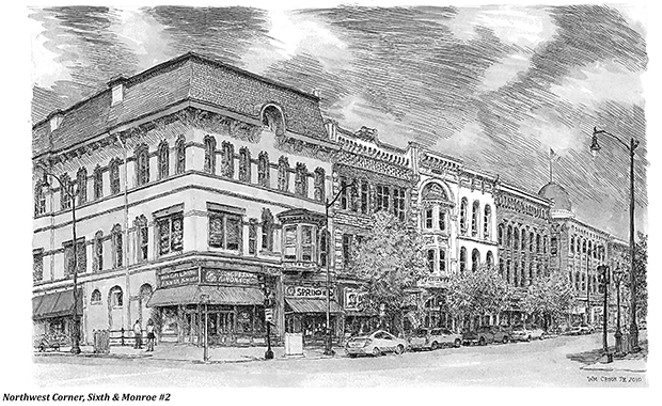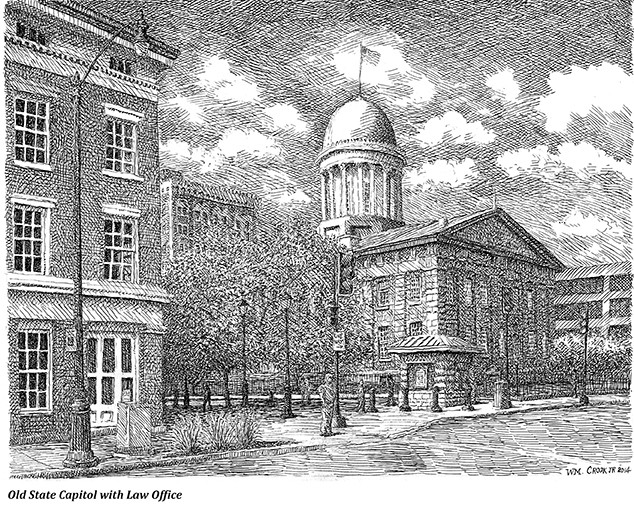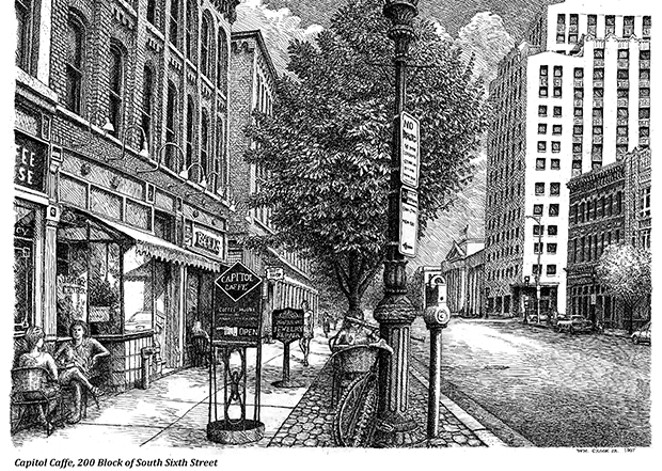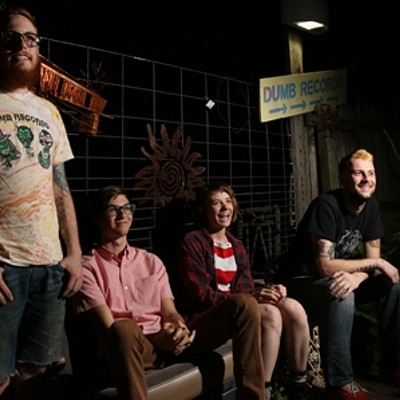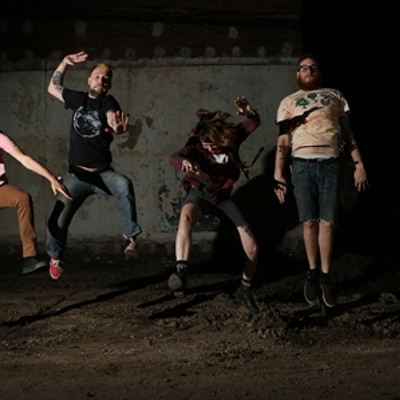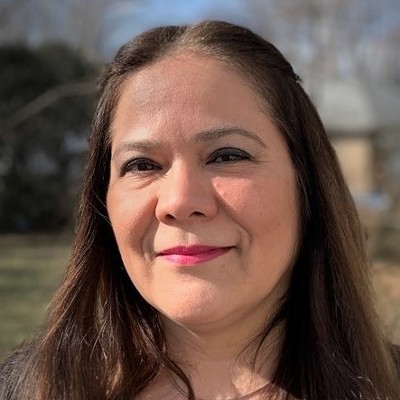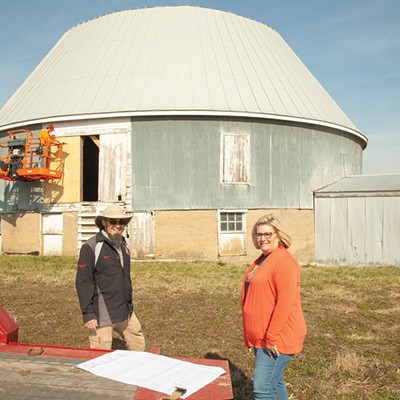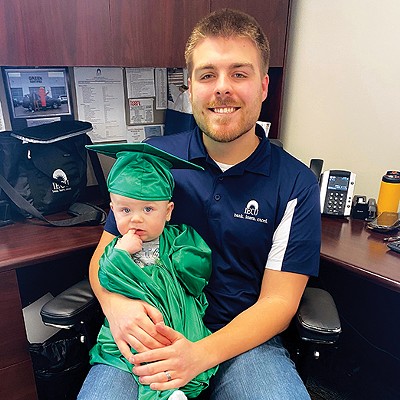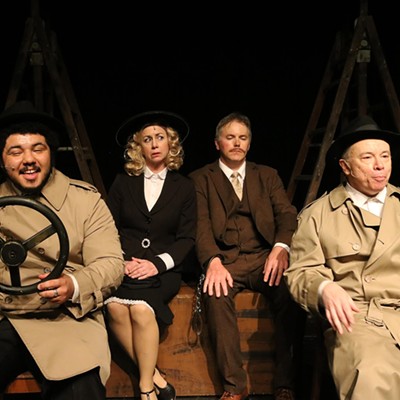Bill Crook has been drawing for over 40 years, filling sketchbooks of his pen and ink illustrations that he says, “explore the interests of my heart.”
Bill is a native of Springfield and has earned a reputation as an outstanding artist. People easily recognize Bill, often seeing him sketching at a site in Springfield, creating his drawings of a building, a street corner or an entire block. Every year since 1979 he has sold his art at a booth at the Old State Capitol Art Fair. He draws a steady stream of patrons.
In 1982 Crook self-published an oversized book of his illustrations. He planned to someday publish another book, and since 2009 he has been scanning his works, some from the past and some never-before-seen. The result is Springfield, Illinois: A Pen and Ink Artist Looks at his Hometown, filled with 185 of his illustrations and covering 145 pages.
The drawings alone would make this a wonderful book. But Crook has added narrative to accompany the illustrations. Crook admits, “I never really considered myself a writer, but I decided to trust my instincts.” His thoughts, memories and reminiscences bring the sites alive with information about the historical background of a building, its owners, construction materials and uses throughout the years. Crook says, “I wanted to weave in my personal history with Springfield.” Readers will enjoy his views and his illustrations – and learn a lot of Springfield history.
The book is divided into 22 sections, each devoted to a theme.
In “Lost Springfield” Crook “mourns” the losses of “the city’s most architecturally significant structures that have been demolished during my lifetime.” These include the old Lincoln Library, torn down in 1974 and replaced by a modern structure at the corner of Capitol Avenue and Seventh Street, Hotel Abraham Lincoln, which stood on Capitol Avenue and Fifth Street and was imploded in 1976, and most recently the YWCA.
He shares his own memories of sites that have been long gone, such as the old First Methodist Church (corner of Capitol and Fifth), “where I attended my grandmother’s funeral,” or the Roxy Theatre (on Fifth between Capitol and Jackson Streets), remembering sitting “as a teenager in the audience for James Bond Thrillers.”
As one reads Crook’s descriptions and looks at the illustrations, it is easy to begin reminiscing and fondly remembering one’s own experiences growing up in Springfield.
The longest section in the book illustrates natural areas in and around the city. There is also a section called “Portals,” which he describes as “major entry points to the city,” such as the State Fair entrance at Peoria Road and Sangamon Avenue.
His favorite intersection is Sixth and Monroe, to which he devotes an entire section of sketches and stories. Crook writes, “This area has not only retained its distinct architectural style but has seen robust preservation projects.”
Crook wasn’t always an artist. After graduating from Springfield High School in 1967, he spent a few years in various parts of the country. It was in Mexico, where it was “warm, sunny and beautiful,” that he did some painting. He had done cartooning of political and satirical subjects while working in graphic design in Portland, Maine, getting some of his work published in a magazine run by author Richard Grossinger.
But, it wasn’t until he moved back to Springfield at the age of 24 that he started some sketches, the first one being the Culver Castle that stood at Ninth and Madison before it was demolished in October 1982 for the expansion of St. John’s Hospital. Colonel James Culver (1852-1911) was a leading contractor and owner of the Culver Marble and Stone Co., known for large stonework structures.
Crook started drawing signs and making graphics of scenes around Springfield, especially of his two favorite topics, nature and old architecture. In the 1970s his pen and ink sketches were becoming better known, especially after several newspaper stories covered Crook’s work.
A degree at Sangamon State University and then a master’s in painting from Illinois State University led to teaching art at the Jacksonville Correctional Center from 1990-2001 and teaching art classes offered in various towns through Lincoln Land Community College.
Crook says he is always amazed when he walks through the State Capitol to see so many of his works hanging in offices. He attributes that to Randall Witter, of lobbying firm Cook-Witter, Inc., who in 1987 commissioned him to create 250 numbered and signed sketches that were distributed at the annual holiday party of Third Rail, the organization of Illinois lobbyists. The sketch was called “The Rail,” a view of the Capitol railing where lobbyists, citizens and reporters can often be seen talking to legislators during session days. Interest in Crook’s work led to more commissions and sales.
Today, Crook continues to sketch, has added writing to his interests, and appreciates his hometown and the many areas that create wonderful places to set up an easel or sit on a step and sketch the scene before him.
Book signing Dec. 8
A book signing, including Bill Crook reading from his book, will be held 7 p.m. Dec. 8 at the Pharmacy Gallery, 711 S. Fifth Street. Springfield, Illinois: A Pen and Ink Artist Looks at His Hometown, 145 pages, was published by Prairie Press, printed by Frye-Williamson. $29. The book is available at Prairie House Custom Frames, 2833 S. Sixth, and Books on the Square, Washington Street just off Fifth Street, and the Pharmacy Gallery.
Cinda Klickna taught English in District 186 and is the immediate past president of the Illinois Education Association. She, like Crook, appreciates the many historical sites in Springfield and remembers many of the buildings now gone.

